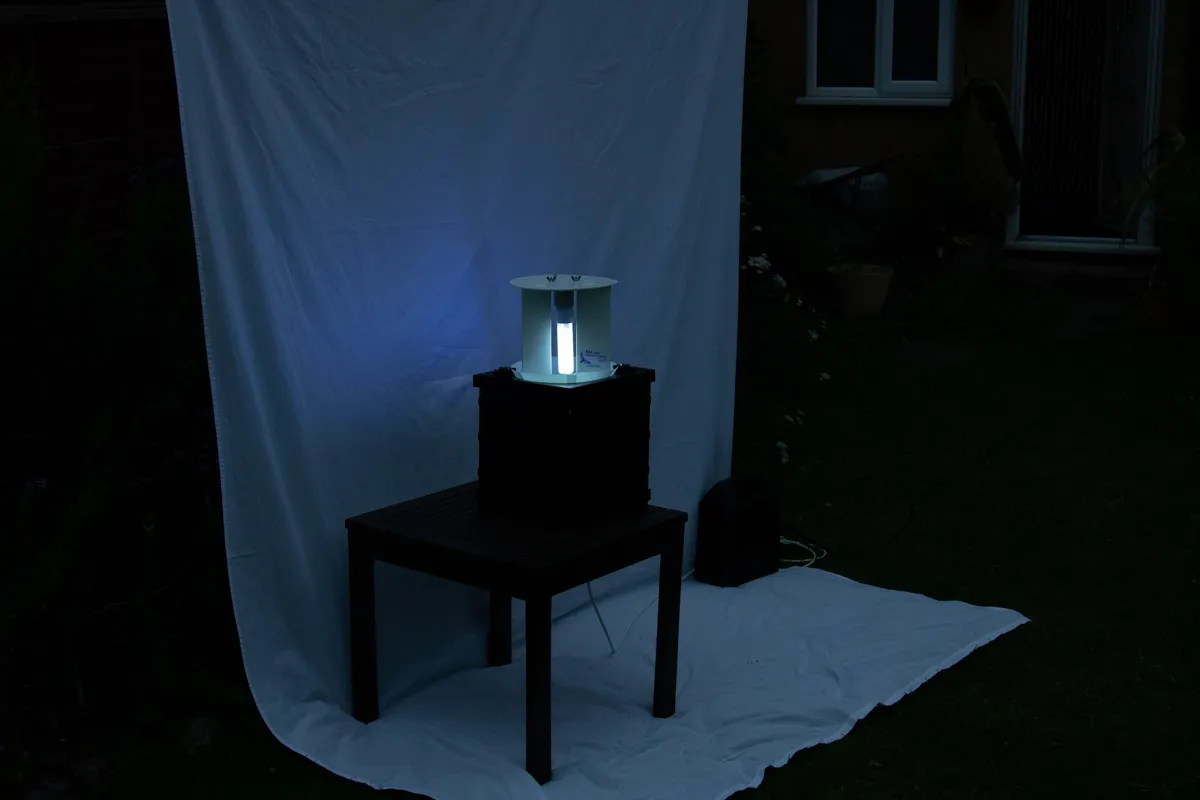A previous post on the Hive (you can read here) mentioned the importance of recording wildlife. The data collected can be used to monitor population changes as the year passes, and see if numbers of a particular species are increasing or declining. But in order for researchers to analyse the data they need raw numbers, and that is where I come in (along with many other amateur naturalists across the country).
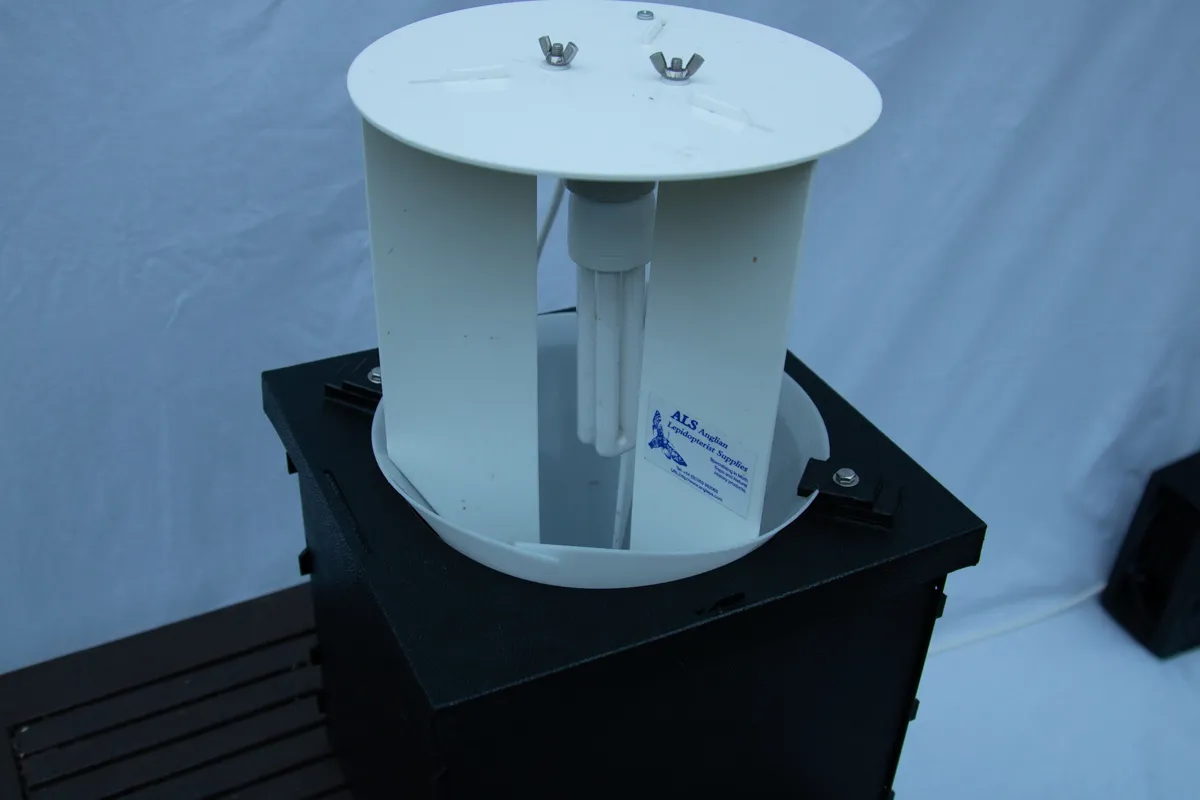
One way to do this is to use a trap, which can be used to catch insects to identify them. A common way of trapping moths is to use a light trap.
NOTE: A light trap doesn’t kill the moths. It merely contains them. The following morning I will photograph and ID them, and then release them again unharmed.
What is a moth trap?
In its most basic form, a Moth Trap is simply a very bright light. Shining a bright torch on a white sheet will attract nocturnal insects, and if you place a box under the light source then they will often land inside the box. Placing egg trays inside the box gives the moths place to crawl under and hide.
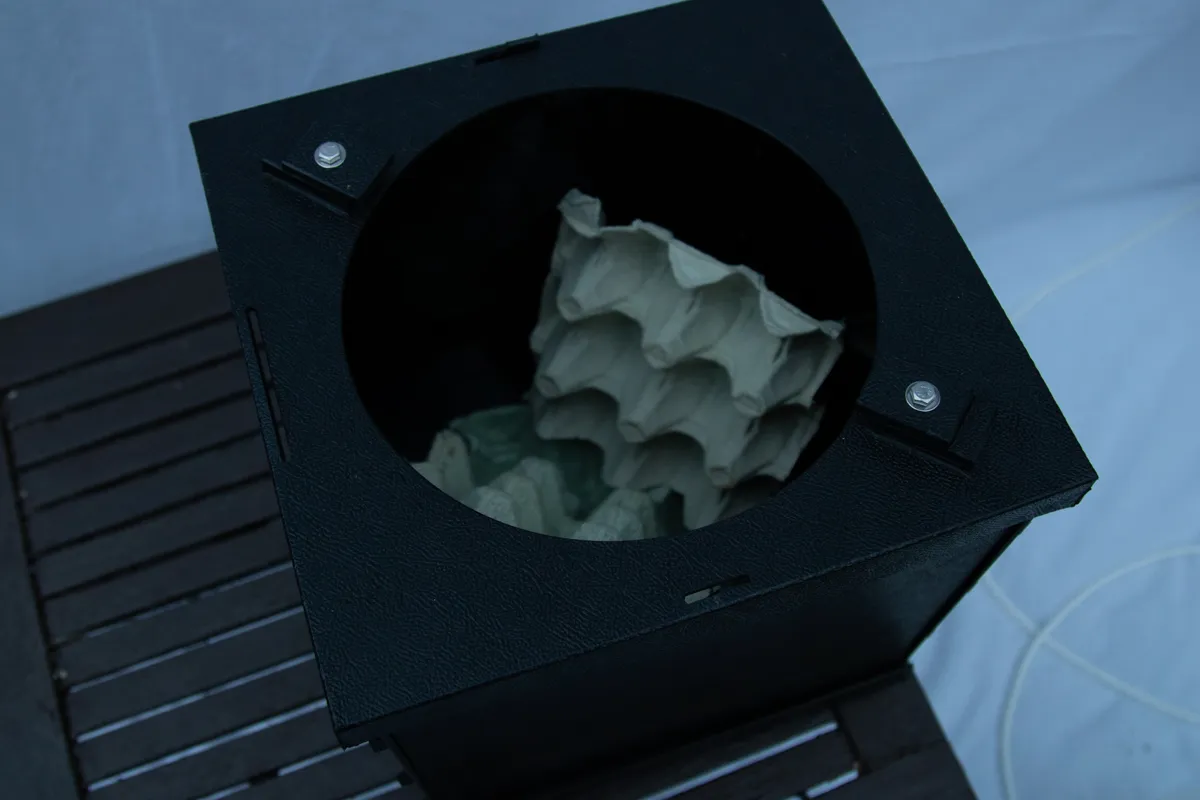
Most traps have a funnel opening, which makes it easy for the moth to fly in, and difficult to fly out again. And that is pretty much it.
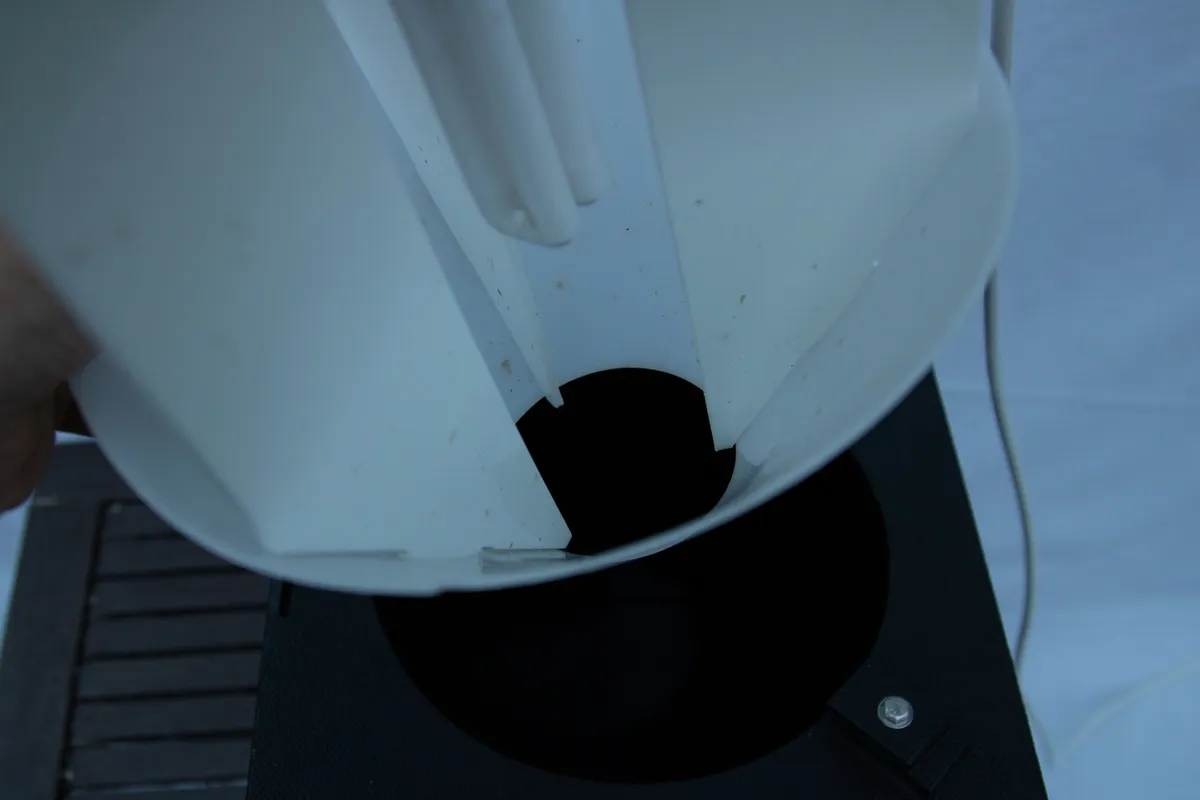
You can spend lots of money on a fancy trap, or make one yourself if you are handy with electrics. Any bright light will do, but lights in the UV spectrum have been proven more attractive to moths. You can see that my light has a blue tint to it.
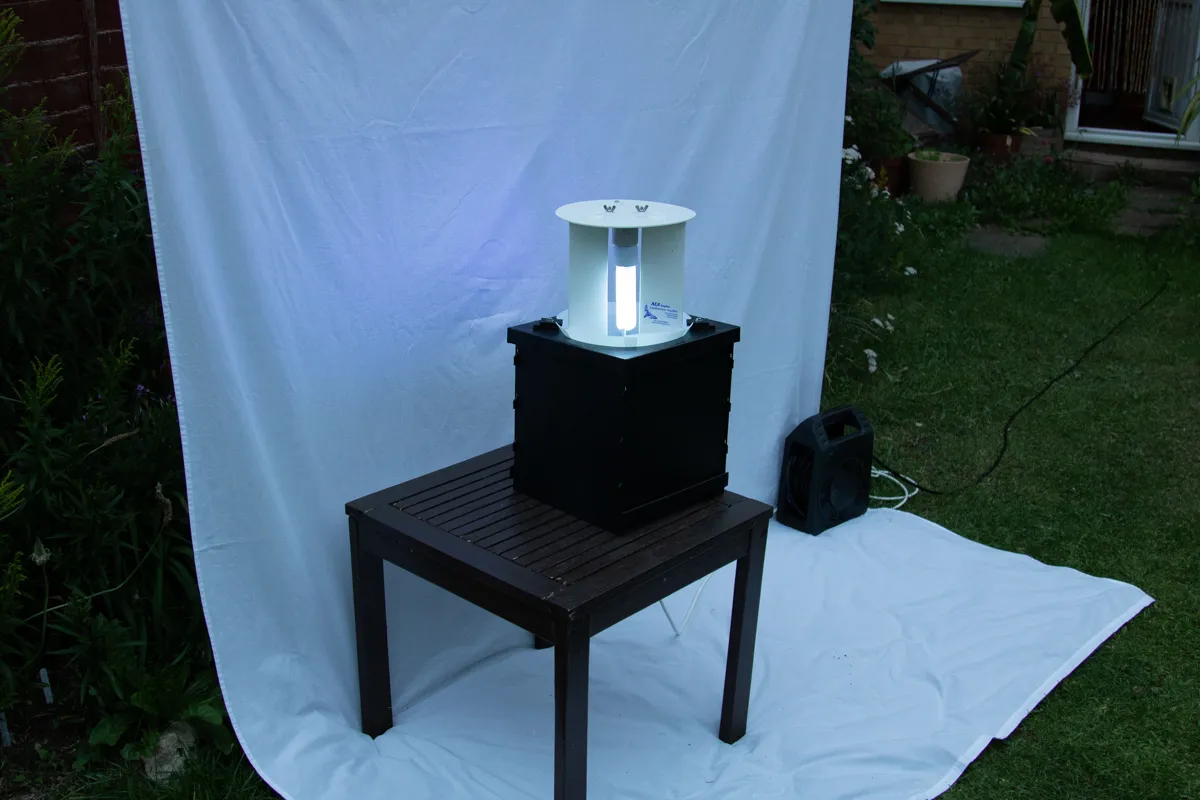
I have used a white sheet in the set-up for two reasons. Firstly the UV light reflects off the sheet to make a bigger ‘target’ and attract more moths (raising it higher off the ground helps as well). The second reason is not all moths land in the trap, they often end up resting on the surrounding vegetation or even on the floor. The white sheet helps me see any walking around the floor under the trap, although I am still careful walking on the rest of the grass.
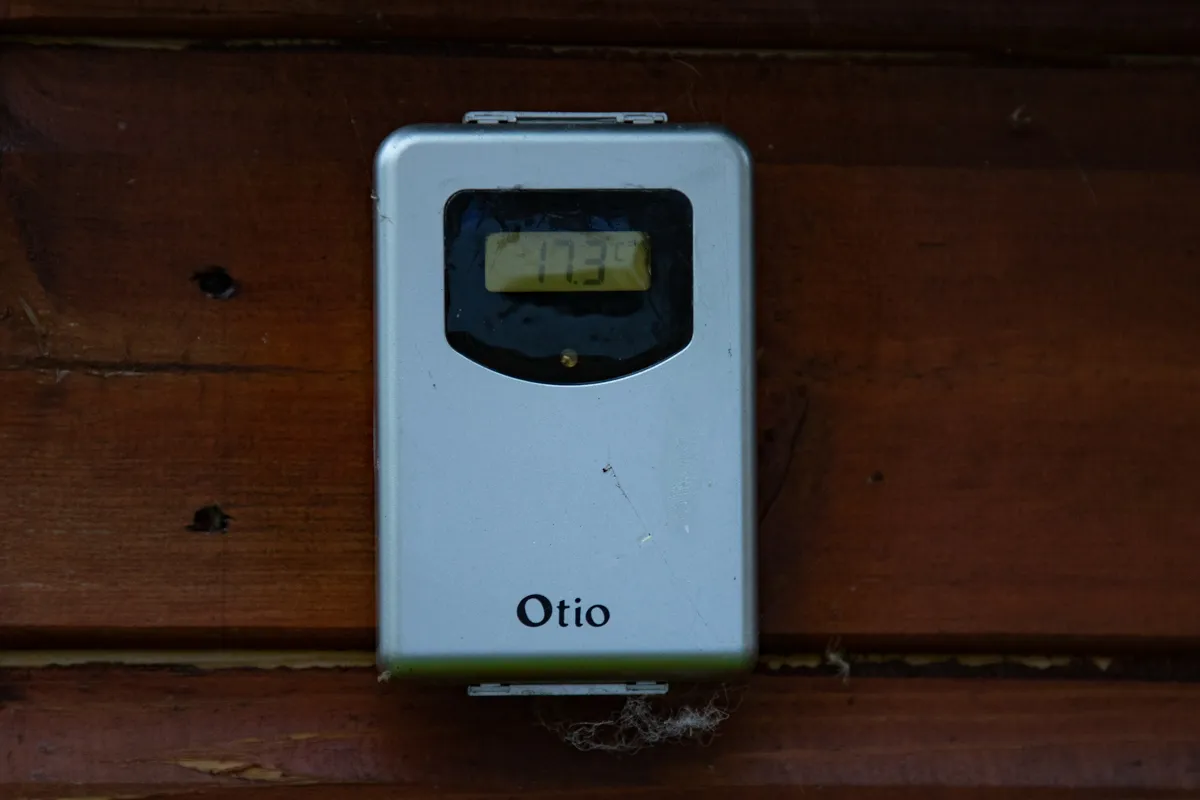
Weather conditions
Tonight is relatively warm (17.3C) and humid, but most importantly there is no wind and plenty of cloud cover, which hides the moon. The brighter the moon is, the less attractive my light is. There is light rain forecast later which is a good sign that it will be humid and cloudy. You can actually get some good results in the rain if it is not too heavy, the moths will still be active. Obviously if a storm hits then that is a different story. Some of the worst conditions would be a combination of strong winds, and clear skies with a Full Moon
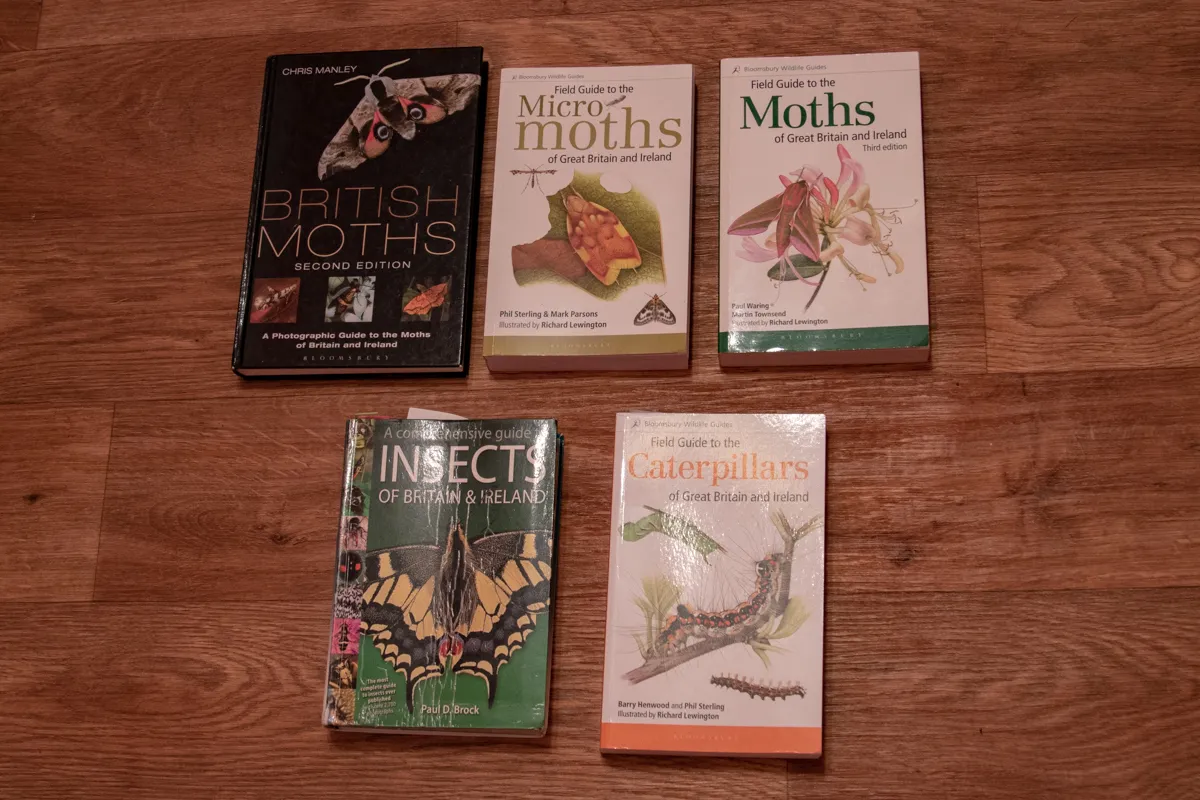
Now its time to get some reference books out and ready to use. There are onver 2500 species of moth in the UK, some are easy to ID, and some are much harder. The 3 moth books pictured are highly recommended for anyone looking at moths in the UK. I doubt I will need the Caterpillar book, but it is good to be prepared. While walking in the garden at night some caterpillars will be active.
The Insect Book by Paul D. Brock is a more general text, featuring lots of commonly seen species (such as bugs, beetles, flies, bees and wasps) found across the UK. It doesn’t have everything, but it is an excellent starting point to begin narrowing down the search for a name.

Finally I open up the spreadsheet on the laptop, and I will be updating it as the evening/night progresses. This is the Data we are hopping to collect over the evening, and at the end of the year it will be sent to the relevent experts for processing. You can see I have already entered the first moth of the evening, a Ringed China Mark, which I saw while setting up.
I am now all set up and ready to see what this evening’s session brings… wish me luck!
[The results of the trapping session will be posted in Part Two in a couple of days]
